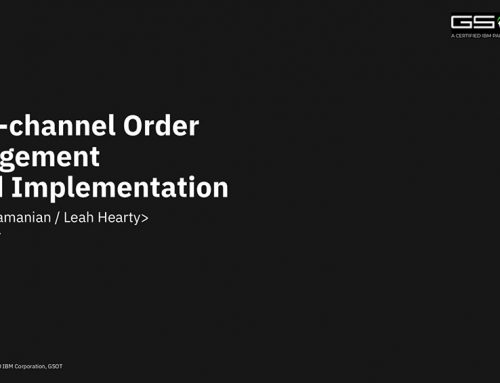Keeping The Customer Experience Simple
Customers in the digital age expect to receive a streamlined, convenient delivery service for their entire order, to a place (and at a time) which suits their needs.
For a retailer with many fulfilment locations, this can prove a challenge. However, by making use of Order Management functionalities such as re-allocations, transfer orders and direct from supplier deliveries, it is possible to present a very straightforward experience to the customer – even when the underlying fulfilment journey is complex.
Let’s take a look at an example:
Sarah adds 5 items to her online basket; a dress, a pair of shoes, a bag, lipstick, and eyeshadow.
She then pays and collects them all together at the store of her choice the next day in the Oxford store.
Sounds easy, right? But in reality, this fulfilment journey has many parts:

Item one, the dress, can be sourced from the Oxford collection store, and so it’s picked there and held for the customer.
The shoes also appear in stock at the collection store, but upon picking cannot be physically located. Instead, this line is reallocated to the DC, where it is in stock.
The bag cannot be sourced from the collection store, and so is allocated to the DC and then sent (via internal fleet along with the shoes) to the collection store for pick up.
The lipstick is sourced directly from a supplier who provides a drop-ship vendor service to the store.
Finally, the eyeshadow, which is only in stock in a different store, (Leeds) is picked there and then sent via transfer order to the collection store for pickup.
Once all items are received at the collection store, the customer receives a notification to collect their order
Keeping the experience simple for the customer requires the right capabilities.
An industry-standard OMS will provide near real-time global inventory visibility. Even a fairly small fulfilment network, say; 5 warehouses and 10 stores in a geographical area can generate between half a million to a million inventory records that need constantly updating across all of the order capturing channels.
Once the customer’s order is in the system, the OMS progresses the order through various stages from creation to delivery, based on configurable rules. The order management delivers a superior customer experience – keeping the customer informed of the status of the order at the relevant stages.
Dealing with complex fulfilment scenarios? – why not chat them through with one of our OMS experts? Email us at info@gsot.com to get in touch.





Leave A Comment